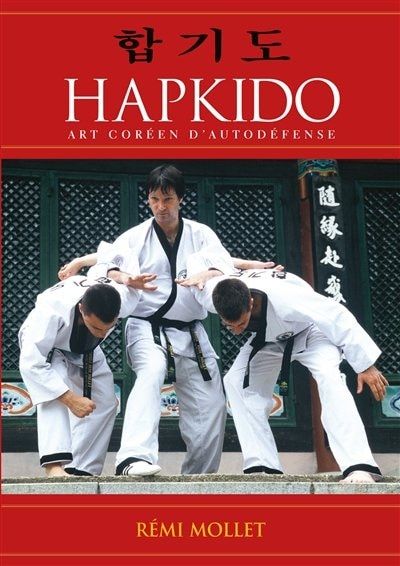Rémi Mollet, Hapkido, Art coréen d'autodéfense, Budo Editions, 2005
Due to its defensive aspect, Hapkido is a martial art based essentially on self-defense techniques. Like all Korean martial arts, it includes a very large number of leg techniques, but unlike taekwondo which, originally, had a military vocation, Hapkido has often been adopted not by the army but by the police or security and close protection groups. In fact, unlike certain methods where we only teach to strike and knock out, the hapkidoist (hapkido practitioner) can, if he wants, control an aggressive opponent without hurting him. "Hapkido" is made up of three semantic elements: "HAP" means "harmony, union, coordination", that is to say the perfect symbiosis of mind - technique - body, "KI" provides information on the importance of "the internal energy” in practice; “DO” means the “path”, the “way” and thereby indicates that it is also an intellectual journey allowing one to have an attitude consistent with the precepts of the martial art. “Hapkido” is therefore the way to deploy one’s energies in a harmonious and balanced way. Although the word recalls its cousin, Japanese aikidô, this martial art is, on the other hand, completely distinct in its spirit, its techniques and its martial applications. While the word "hapkido" is a fairly recent creation, it designates an effective self-defense method whose techniques are drawn from the thousand-year-old fund of Korean martial arts, a veritable crucible where original methods but also ancient techniques were forged, constantly modified and improved.
Source: https://www.amazon.pl/Hapkido-cor%C3%A9en-dautod%C3%A9fense-R%C3%A9mi-Mollet/dp/2846170347


